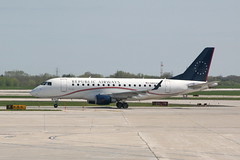 5-Oscar winner, composer John Barry, dies at 77
5-Oscar winner, composer John Barry, dies at 77By ROBERT BARR, Associated Press Robert Barr, Associated Press – 2 hrs 59 mins ago
LONDON – Composer John Barry, who won five Oscars for his film work but was best known for his contributions to a dozen James Bond movies, has died. He was 77.
Barry died in New York on Sunday, his family said.
The English-born composer won two Oscars, for the score and the song, for "Born Free" in 1966, and he earned single statuettes for "The Lion in Winter" (1968), "Out of Africa" (1985) and "Dances with Wolves" (1990).
He was also nominated for his scores for "Mary, Queen of Scots" in 1971 and "Chaplin" in 1992.
His association with Agent 007 began controversially with "Dr. No" in 1962, although his contribution was not credited. He wrote music for a dozen Bond films in all.
Monty Norman, who was credited as the composer for "Dr. No," sued The Sunday Times in 2001 for reporting that Barry had been called in to help after Norman's inspiration faltered. Norman won the case, collecting 30,000 pounds ($48,000).
Barry, who was not sued, had testified that he was paid 250 pounds to work on the music but had agreed that Norman would get the credit, which was his contractual right.
Barry subsequently wrote music for "Goldfinger," "From Russia with Love," "Thunderball," "You Only Live Twice," "On Her Majesty's Secret Service," "Diamonds are Forever," "The Man with the Golden Gun," "Moonraker," "Octopussy," "A View to a Kill" and "The Living Daylights."
Born in York, England as John Barry Prendergast, he trained as a pianist and then took up the trumpet. He founded a jazz group, the John Barry Seven, in 1957.
"The James Bond movies came because we were successful in the pop music world, with a couple of big instrumental hits. They thought I knew how to write instrumental hit music," Barry said in an interview with The Associated Press in 1991.
"Rather than talkie-talkie movies, I liked films with excitement and adventure, because they were the ones that had the music," Barry said in an interview with The Guardian newspaper in 1999.
"It was nice to have the very commercial Bondian thing ... and then at the same time have these smaller movies which were artistically more interesting to do," he said.
Other films included "Robin and Marian," "Somewhere in Time," "The Cotton Club," "Peggy Sue Got Married" and "Howard the Duck." He was also nominated for Oscars for his scores of "Mary, Queen of Scots" in 1971 and "Chaplin" in 1992.
Barry trained as a pianist, studied counterpoint with York cathedral organist Francis Jackson, and later took up the trumpet. He founded a jazz group, the John Barry Seven, in 1957.
The group teamed with singer Adam Faith, scoring hits with "What Do You Want?" and "Poor Me," and Barry moved into film work when Faith was tapped to star in "Beat Girl" (titled "Living for Kicks" in the United States).
Barry was divorced three times. He is survived by his wife Laurie, his four children and five grandchildren. A private funeral was planned, the family said.





















